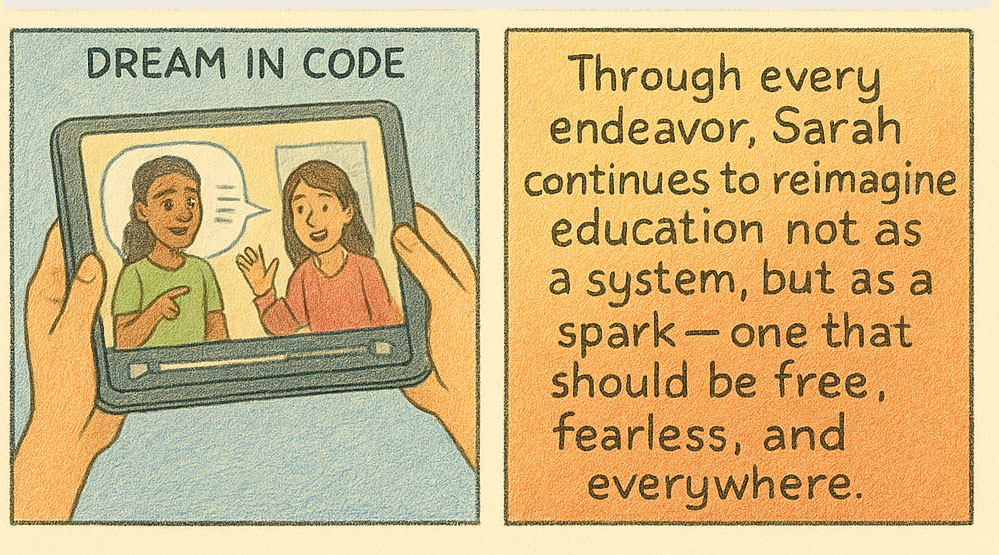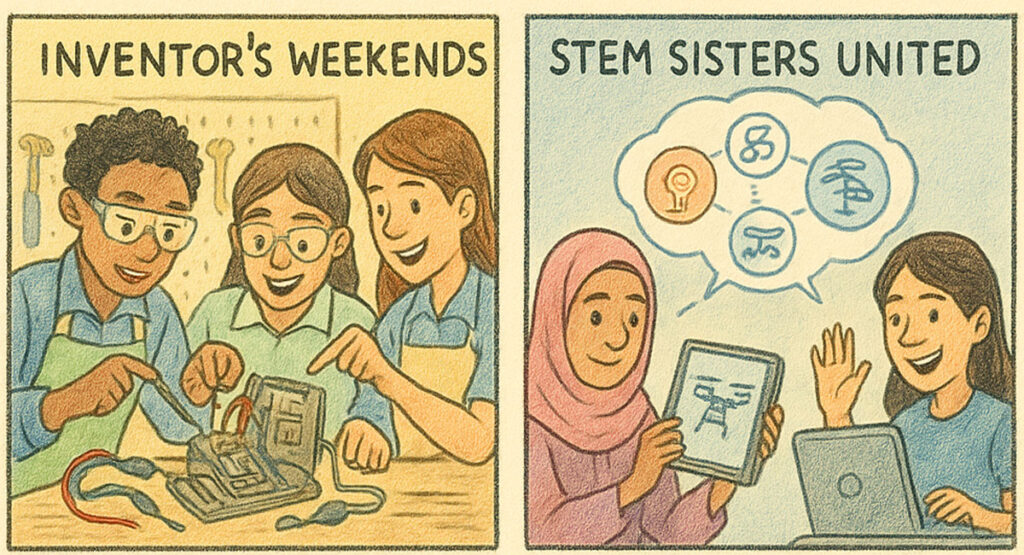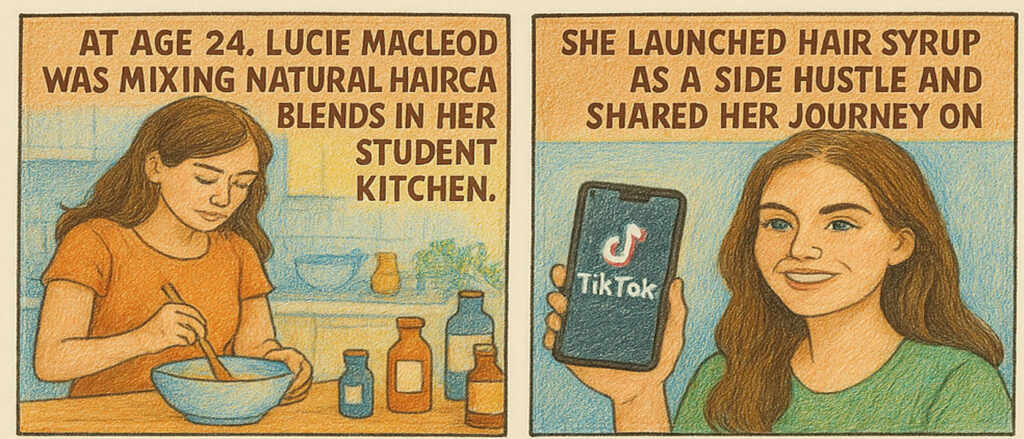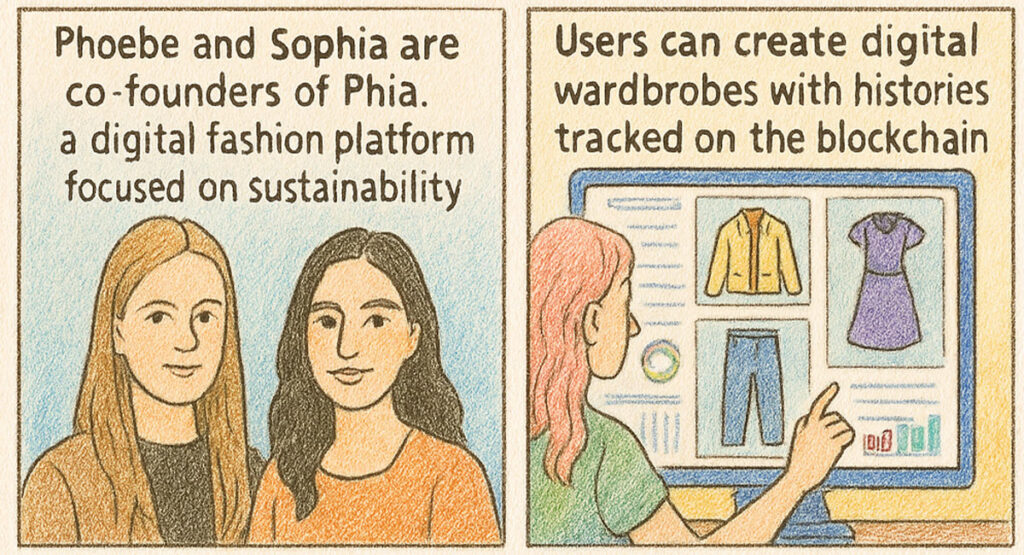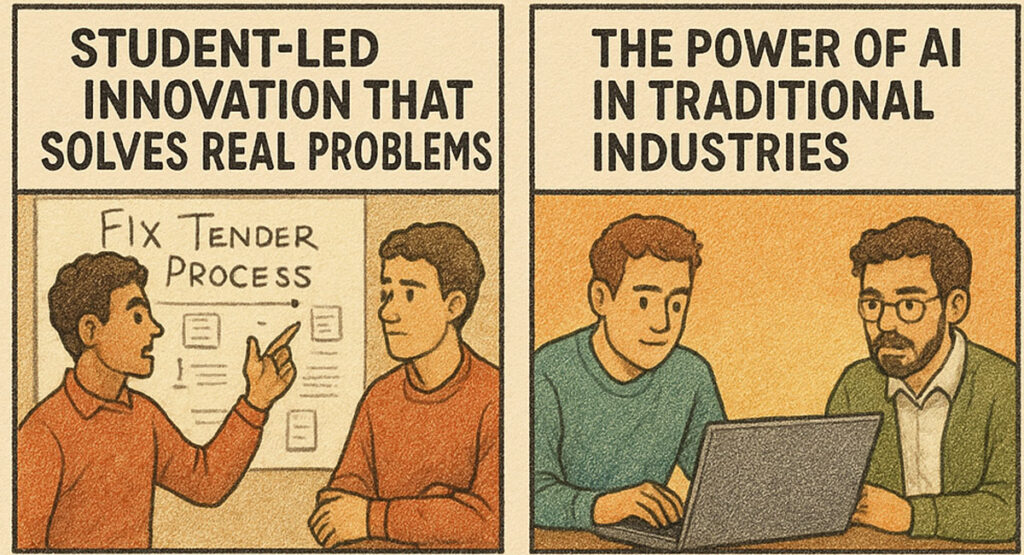From a young age, Sarah Eisenmenger possessed a fascination with how the world worked — not just the “why” of things, but the “how.” While most children were playing with dolls or bikes, Sarah was building small circuits, dismantling old radios, and scribbling futuristic inventions in her notebooks. Born and raised in Australia, she was a child with endless curiosity and a natural instinct to question everything. That spark became a fire when she encountered her first coding program in middle school — and from there, she never looked back.
As she progressed through school, Sarah noticed a disheartening pattern: girls like her who were interested in science or engineering were often isolated, overlooked, or discouraged. Rather than accept it, she decided to challenge it. She began mentoring younger students, designing after-school workshops, and even creating basic robotics clubs that welcomed everyone, especially those who felt out of place in traditional classrooms.
By her early twenties, Sarah had transformed from a passionate student into a pioneering educator. She founded STEMrise Australia, a grassroots initiative turned national program that offers accessible, hands-on learning in science, technology, engineering, and mathematics to children in both urban centers and remote communities. With a suitcase full of kits, laptops, and solar-powered devices, she traveled from school to school, lighting the spark of discovery in places that had been overlooked by mainstream STEM programs.
What made her approach unique was not just the content but the heart behind it. Her workshops didn’t just teach kids how to code — they taught them how to believe in themselves. Sarah emphasized experimentation over perfection, inclusion over competition, and curiosity over fear. Whether she was guiding Indigenous girls through a drone-building challenge or helping rural students design apps to solve water scarcity issues, her message remained the same: “You already belong in STEM. The lab coat fits you too.”

Her work attracted attention. Soon, her programs were being adopted by educational boards, and she was invited to speak at national conferences. But recognition never changed her focus. Sarah remained hands-on, continuing to build bridges between technology and the communities that needed it most.
She launched CodeBloom, a summer innovation camp tailored for girls aged 10 to 16, where participants not only learned to build robots but also met female scientists, engineers, and technologists who looked like them and spoke like them. That visibility mattered. CodeBloom didn’t just change lives — it redefined futures.
To expand her mission globally, she collaborated with international educators to develop an open-source STEM curriculum that could be adapted for low-resource classrooms around the world. From solar-powered schools in Kenya to refugee centers in Eastern Europe, Sarah’s influence rippled far beyond Australian shores.
Behind every soldered wire, every algorithm puzzle, and every telescope pointed at the night sky, there is a story of a child who dared to dream. Sarah Eisenmenger has made it her mission to ensure those dreams are never silenced — especially for those who have been told they don’t belong.
She has since partnered with universities, technology companies, and nonprofit organizations to bring mentorship and scholarships to aspiring young scientists. Her latest venture, STEMxverse, combines immersive virtual reality experiences with real-world experiments, giving kids in remote areas access to digital labs, 3D modeling tools, and interactive field trips through space, deep oceans, and the inner workings of the human body — all from their classroom desks.
Sarah’s legacy is still being written, but its chapters are already filled with invention, resilience, and the unstoppable power of education. She is not just a STEM innovator; she is an architect of possibility. Through every workshop, every coded line, and every spark of confidence she ignites in young minds, she proves that real innovation begins when we believe that everyone deserves a seat at the table of discovery.
Sarah Eisenmenger’s journey isn’t just about innovation — it’s a celebration of possibilities. Her impact has stretched far beyond the classroom, blooming into powerful, life-changing movements that continue to inspire globally.
She began hosting Inventor’s Weekends, where students from diverse backgrounds were challenged to build prototypes that solve local problems — and the results were astonishing. One group designed a flood-detection sensor for their village; another created a biodegradable packaging alternative. These weren’t just school projects — they were the seeds of real-world solutions planted in young hearts.
To deepen her reach, Sarah started STEM Sisters United, a digital sisterhood where girls from around the world connect to share their tech creations, science experiments, and startup ideas. In this online space, a 12-year-old girl in a small town in Australia can brainstorm with a 14-year-old in Bangladesh or a 16-year-old in Canada. Through this, Sarah is building a generation that sees global collaboration as second nature.
She also brought STEM into the arts by launching TechCanvas, a traveling exhibition where science meets creativity. Young inventors showcased everything from wearable tech fashion to AI-generated music and 3D-printed sculptures that reacted to human touch. This initiative proved that STEM isn’t confined to labs — it lives in every brushstroke, every rhythm, and every design.
One of her most moving programs was Project Horizon, where she partnered with youth correctional centers to provide coding bootcamps and engineering kits to incarcerated teens. She believed that potential should never be judged by past mistakes — and the results spoke for themselves. Some of those same teens are now studying engineering, creating apps for mental health, and even mentoring others through Sarah’s network.
Not one to ignore the power of storytelling, she co-created a web series titled “Dream in Code”, where students and mentors shared real stories of struggle and triumph in their STEM journeys. These mini-documentaries touched millions, planting courage in the minds of those who felt unseen.
As technology moved forward, so did her vision. She introduced STEM for the Earth, a green-tech challenge encouraging students to create innovations that protect the environment. From solar-powered desalination units to AI-powered waste sorters, the initiative not only built smarter kids — it built a greener planet.
Even during personal challenges, Sarah never paused. After experiencing burnout, she openly discussed mental health in the world of high-achievement education. She created WellCode, a program that teaches mindfulness alongside programming, reminding young learners that success doesn’t mean self-sacrifice — it means balance, compassion, and joy.
Through every endeavor, Sarah continues to reimagine education not as a system, but as a spark — one that should be free, fearless, and everywhere. Her mission is a movement. Her story is a reminder that the future isn’t waiting to be discovered — it’s waiting to be designed by the bold hands of today’s dreamers.
